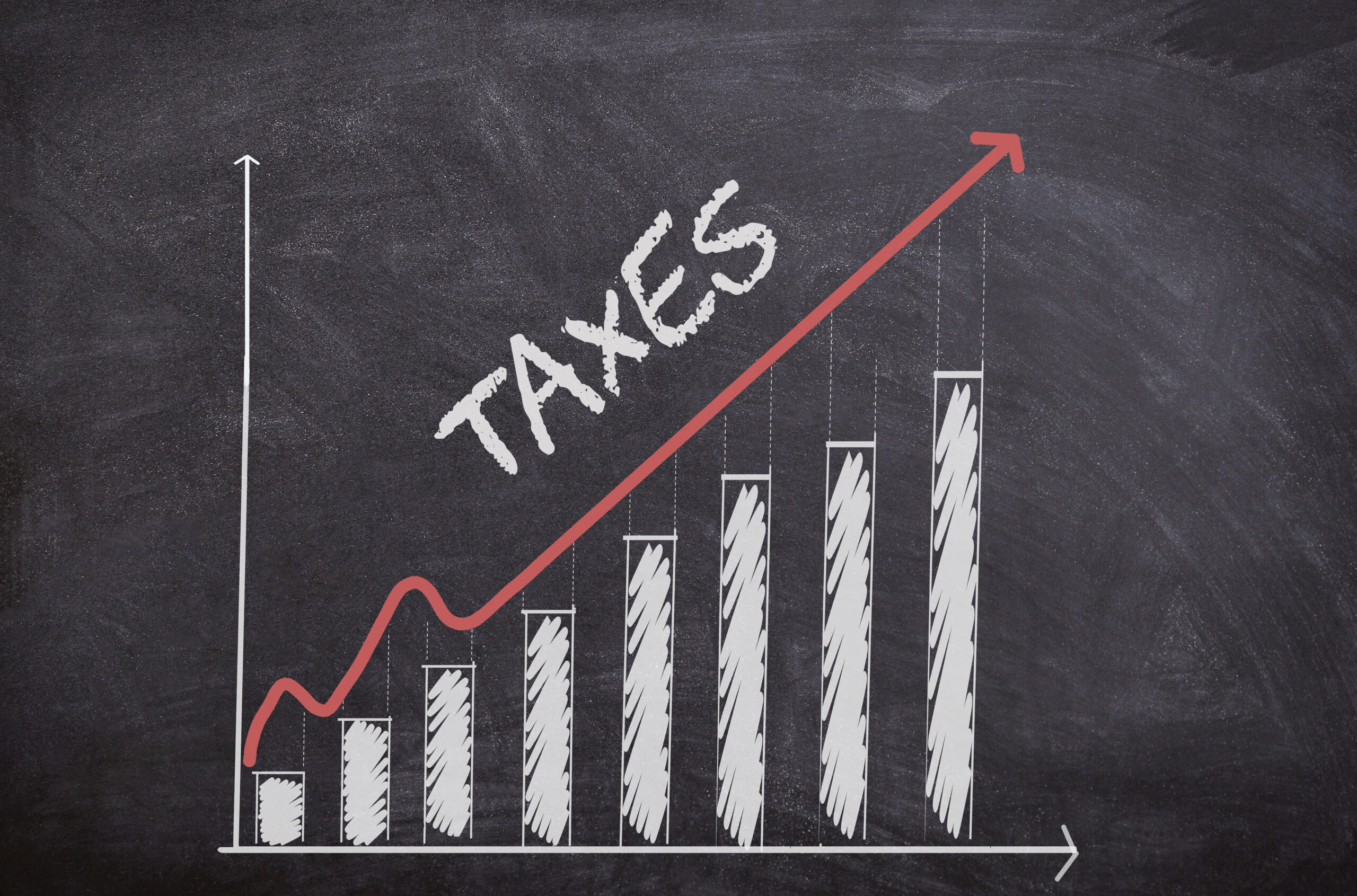The topic of rising taxes is often debated, and several underlying factors could lead to significant tax increases in the future. Governments rely on taxes to fund public services, infrastructure, and social programs, but various economic, demographic, and political shifts could place additional pressure on revenue sources. Below are the key reasons why taxes could rise significantly in the future.
1. Rising National Debt
Many countries, particularly advanced economies, are grappling with high levels of national debt. Governments have borrowed heavily in recent years to fund stimulus packages, support during economic downturns, and ongoing welfare programs. As debt continues to grow, interest payments become a larger portion of national budgets. To manage this debt and reduce deficits, governments may turn to higher taxes as one of the few reliable ways to increase revenue.
For example, during economic crises such as the 2008 financial collapse or the COVID-19 pandemic, many nations incurred substantial debt to stimulate the economy. Over time, repaying this debt and funding essential services may necessitate higher taxes, especially if economic growth is insufficient to reduce debt levels naturally.
2. Aging Population and Healthcare Costs
Demographic changes, particularly the aging population in many developed countries, put immense pressure on government resources. As the baby boomer generation ages, the demand for healthcare, pensions, and social security benefits increases. At the same time, the working-age population that funds these services through taxes is shrinking.
This demographic shift means that fewer workers will be supporting a growing number of retirees, leading to higher healthcare and retirement costs. Governments may need to raise taxes to cover these expenses, particularly in countries where publicly funded healthcare systems or social security programs are a significant part of government spending.
3. Climate Change and Environmental Policies
Climate change is becoming an increasingly pressing issue, and addressing it will require significant public investment in infrastructure, renewable energy, and climate mitigation projects. Governments may introduce new taxes or increase existing ones to fund green energy initiatives, infrastructure adaptations, and environmental cleanup efforts.
Carbon taxes, environmental levies, and taxes on industries that contribute to pollution may all be expanded as part of future climate policy. The need to balance environmental sustainability with economic growth could lead to tax increases targeted at reducing carbon emissions and funding cleaner technologies.
4. Increased Social Spending
The demand for expanded social programs—such as universal healthcare, free college tuition, or guaranteed basic income—has been growing in many countries. If governments implement these policies, significant increases in public spending would be necessary.
The funding for such programs would likely require higher taxes, particularly on higher-income earners or corporations, to balance out the fiscal cost. Wealth redistribution, in the form of progressive tax policies, may become a more prominent approach to address income inequality while funding these expanded social services.
5. Corporate Tax Reforms
In recent years, there has been an increasing push to reform corporate taxation, particularly among multinational corporations. Many large corporations use legal loopholes to avoid paying taxes or shift profits to low-tax jurisdictions. Governments may seek to close these loopholes and increase corporate tax rates to ensure that businesses pay their “fair share.”
As international efforts to harmonize corporate tax rates, such as the OECD’s global minimum tax initiative, gain traction, companies may face higher taxes. This would be part of broader efforts to reduce tax avoidance and ensure that revenue is generated from multinational corporations that benefit from global markets.
6. Income Inequality and Wealth Taxes
Rising income inequality has led to discussions about the need for wealth taxes or higher taxes on the wealthy. In many countries, a significant share of wealth is concentrated in the hands of a small percentage of the population, leading to calls for tax policies that target high-income earners, large inheritances, and accumulated wealth.
The introduction of wealth taxes, capital gains tax increases, or higher estate taxes could be a method governments use to address inequality while raising additional revenue. As income disparity becomes a more central issue in political discourse, tax reforms targeting the wealthy may gain more traction.
7. Inflationary Pressures
In times of high inflation, governments may need to raise taxes to cool down the economy or generate additional revenue to support essential services. Inflation increases the cost of public services, infrastructure, and welfare programs, making it necessary for governments to find ways to balance their budgets.
While raising interest rates is a common method to control inflation, increasing taxes could also be part of the policy mix to reduce consumer demand or curb public sector wage inflation. Additionally, inflation erodes the real value of tax revenues if tax brackets are not adjusted, forcing governments to raise taxes to keep up with rising costs.
8. International Economic Competition
Globalization has led to intense competition between countries for business investment, often resulting in a “race to the bottom” in terms of corporate tax rates. However, there is growing recognition that this trend is unsustainable, and international organizations, such as the OECD and G20, have been working to create a more coordinated approach to corporate taxation.
As countries look to maintain competitiveness while ensuring adequate revenue, taxes on corporations or high-net-worth individuals may increase. This is especially true if countries begin to implement uniform global tax policies to prevent tax avoidance and ensure fair competition across borders.
9. Public Infrastructure and Education Investments
Investments in infrastructure and education are essential for long-term economic growth and competitiveness. Governments may need to raise taxes to fund large-scale infrastructure projects, such as transportation systems, clean energy grids, and technological upgrades.
Similarly, investments in education, particularly in areas like STEM (science, technology, engineering, and math), are critical for future workforce development. As these sectors require substantial funding, tax increases may be necessary to meet these public investment needs, especially if other revenue streams are insufficient.
10. Political Factors and Changing Ideologies
Shifts in political power and ideologies can have a significant impact on tax policy. If there is a political swing towards more progressive, welfare-oriented governance, higher taxes may be introduced to fund expanded social services, combat inequality, and promote economic justice.
On the other hand, if more conservative or market-oriented governments come to power, they might focus on cutting taxes. However, given the existing fiscal challenges like national debt, aging populations, and the need for infrastructure investment, even traditionally low-tax governments may be forced to raise taxes.
Conclusion
Several factors, including rising national debt, an aging population, increased social spending, possible wars and environmental challenges, could drive significant tax increases in the future. While tax hikes may be inevitable to address these long-term fiscal needs, governments will have to balance the need for revenue with the impact on economic growth and personal incomes. Being aware of these factors can help individuals and businesses prepare for potential tax changes and adapt their financial strategies accordingly.


Leave a Reply